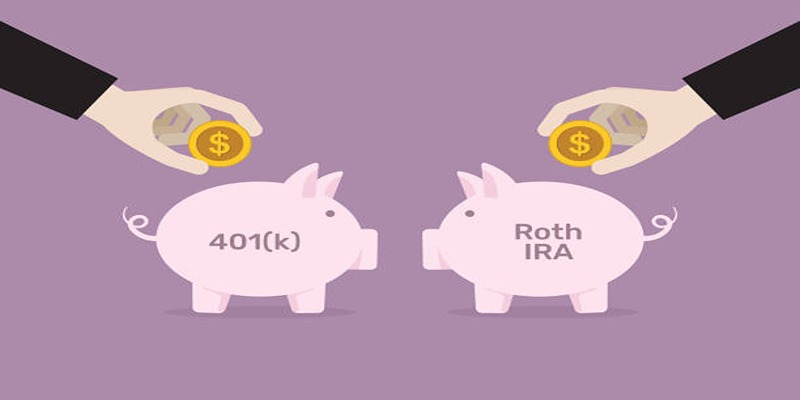Roth IRA Withdrawal Rules: What You Need to Know
A Roth IRA is a great way to save for retirement, but it’s important to understand the rules before withdrawing any money. Unlike traditional retirement accounts, Roth IRAs allow tax-free withdrawals if certain conditions are met. Whether you’re planning to withdraw your contributions or earnings, knowing the guidelines can help you avoid unnecessary taxes or penalties. This guide will walk you through the basics of Roth IRA withdrawal rules so you can make informed decisions and keep more of your hard-earned savings.
When Are You Eligible to Withdraw from a Roth IRA?

The first thing that needs to be realized is when you are allowed to take out money from your Roth IRA penalty free. The other difference is that one cannot be forced to take required minimum distributions like in normal IRA. It also means you can watch your money accumulate tax-free as long as you want, without feeling the pinch. However, there are a few key requirements that must be met before making any withdrawals:
- You must be at least 59½ years old
- The account must have been open for at least five years
If these conditions are not met, withdrawing money from your Roth IRA may result in taxes and penalties.
What Are the Exceptions to Early Withdrawal Penalties?
If you need to withdraw money from your Roth IRA before age 59½, there are some exceptions that can help you avoid the 10% early withdrawal penalty. These include:
- Using the funds for a first-time home purchase (up to $10,000)
- Paying for qualified education expenses
- Covering unreimbursed medical expenses exceeding 7.5% of your adjusted gross income
- Paying health insurance premiums while unemployed
It’s important to note that if you make early withdrawals and do not meet any of these exceptions, you will likely face both taxes and penalties on the amount withdrawn.
How Much Can You Withdraw from a Roth IRA?
When it comes to withdrawal amounts, there are two types of contributions to consider: regular contributions and conversion contributions.
- Regular Contributions: These are the funds you have contributed directly into your Roth IRA over time. Since these contributions have already been taxed, they can be withdrawn at any time without additional taxes or penalties.
- Conversion Contributions: These are funds that were rolled over into a Roth IRA from another retirement account (such as a traditional IRA). In order to withdraw these funds tax-free, you must meet the five-year rule mentioned earlier. Additionally, if you withdraw any earnings on these converted funds before age 59½, you may face both taxes and penalties.
What Happens if You Withdraw Your Earnings Early?
Earnings on your Roth IRA contributions are typically not eligible for tax-free withdrawal until age 59½. However, there are some exceptions that may allow you to access these funds earlier without taxes or penalties:
- Disability: If you become permanently disabled, you can withdraw earnings from your Roth IRA without penalty.
- Death: In the event of your death, your beneficiaries can withdraw all funds (including earnings) from your Roth IRA without taxes or penalties.
- Substantially Equal Periodic Payments (SEPP): This method allows you to take substantially equal distributions from your Roth IRA each year for at least five years or until age 59½, whichever is longer. While this does not completely eliminate the early withdrawal penalty, it can help reduce the impact.
What Happens if You Contribute Too Much to Your Roth IRA?
If you contribute more than the annual limit (currently $6,000 for those under age 50 and $7,000 for those over 50) to your Roth IRA, you will face a 6% excess contribution tax on the amount exceeding the limit. This fee applies each year until you withdraw the excess contributions or pay additional taxes on them. To avoid this penalty, make sure to keep track of your contributions and stay within the annual limits.
Strategies for Managing Withdrawals

Now that you understand the basic withdrawal rules for Roth IRAs, here are some strategies to help you manage your withdrawals effectively:
- Plan Ahead: Before making any withdrawals, consult with a financial advisor or tax professional to ensure you fully understand the tax implications and penalties. They can also help you determine the most efficient way to withdraw funds without sacrificing potential growth.
- Consider Your Retirement Income Needs: If possible, it’s best to leave your contributions in your Roth IRA as long as possible so they can continue growing tax-free. However, if you have significant retirement income needs, withdrawing from your Roth IRA may be necessary.
- Strategize Conversions: If you have both traditional and Roth IRAs, you may want to consider converting funds from your traditional IRA to your Roth IRA strategically. This can help minimize taxes and maximize retirement income in the long run.
- Diversify Your Retirement Savings: While a Roth IRA can be a valuable part of your retirement savings plan, it’s important to also have other types of accounts (such as a 401(k) or traditional IRA) for added diversification. This can help provide flexibility in retirement and potentially reduce tax burden.
Common Mistakes to Avoid
Here are some common mistakes to avoid when it comes to withdrawing from your Roth IRA:
- Not Understanding the Rules: Make sure you fully understand the rules and requirements for making withdrawals from your Roth IRA to avoid unnecessary taxes and penalties.
- Taking Too Much or Too Little: Withdrawing too much money can result in a larger tax burden, while taking too little may not provide sufficient retirement income. Make sure to carefully consider your needs and consult with a professional before making any withdrawals.
- Forgetting about Taxes: Withdrawing funds from your Roth IRA may have tax implications, so make sure to plan accordingly and potentially set aside funds for any potential taxes owed.
Final Thoughts
A Roth IRA can be a powerful tool in your retirement savings strategy, offering tax-free growth and withdrawals if used correctly. However, it’s essential to understand the rules and carefully plan your withdrawals to maximize the benefits. Avoid common mistakes, seek guidance from financial professionals, and regularly review your financial plan to ensure it aligns with your retirement goals. With proper planning and awareness, your Roth IRA can provide invaluable flexibility and security in your retirement years.












